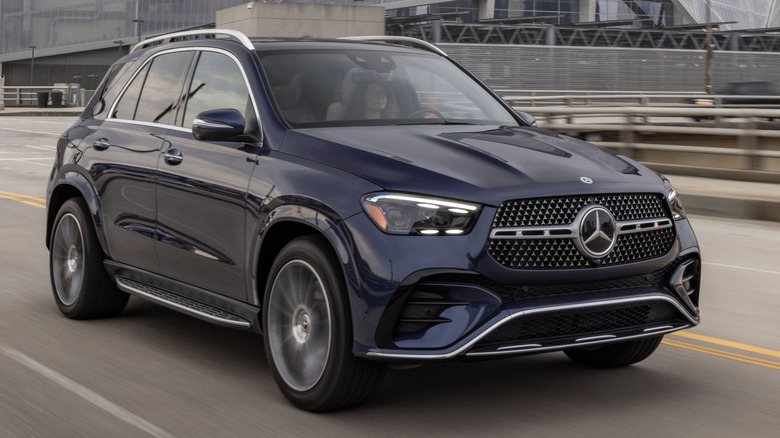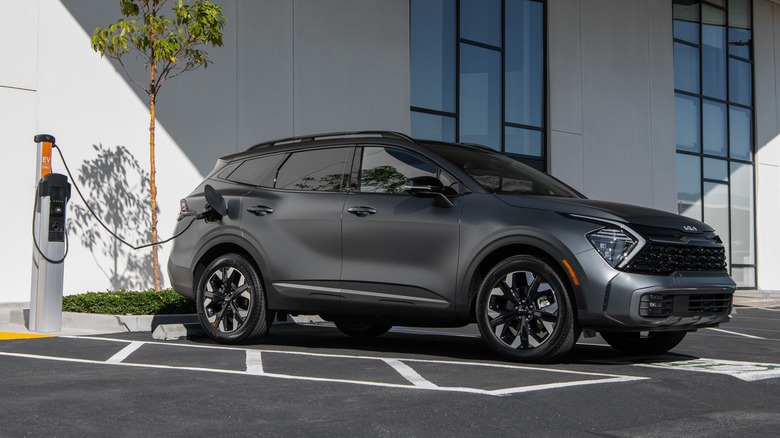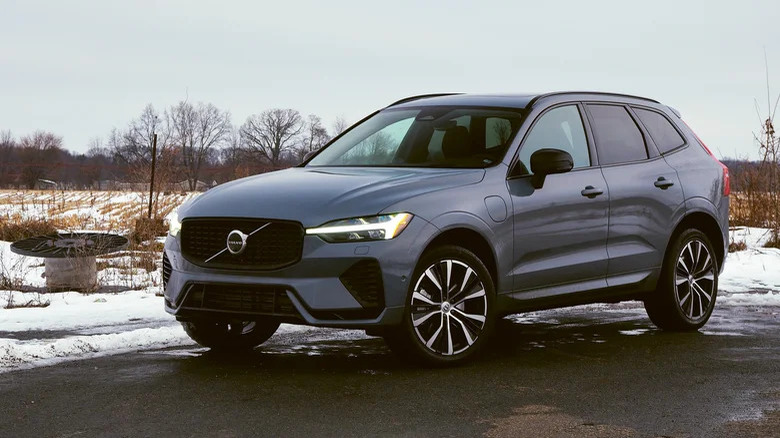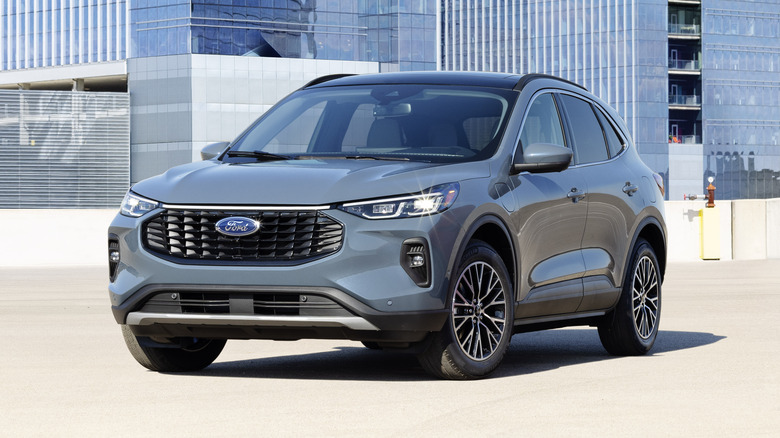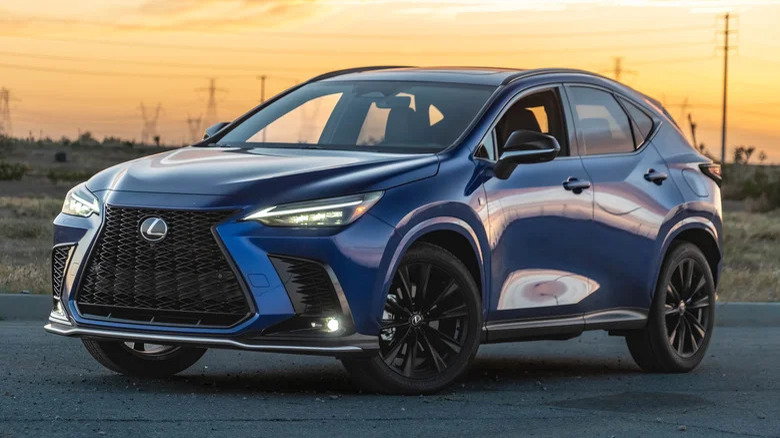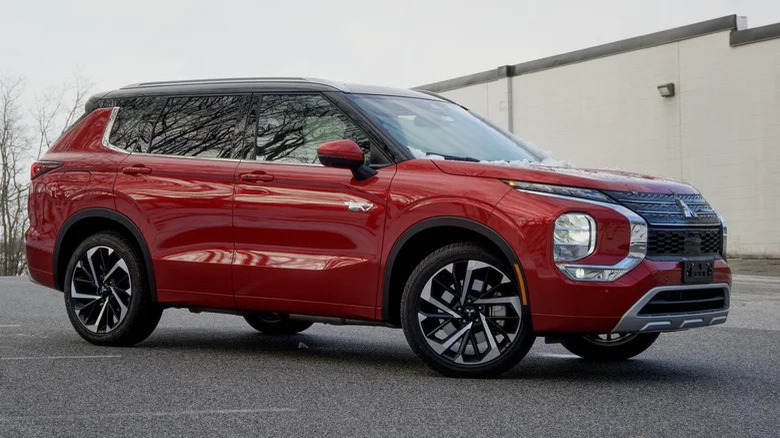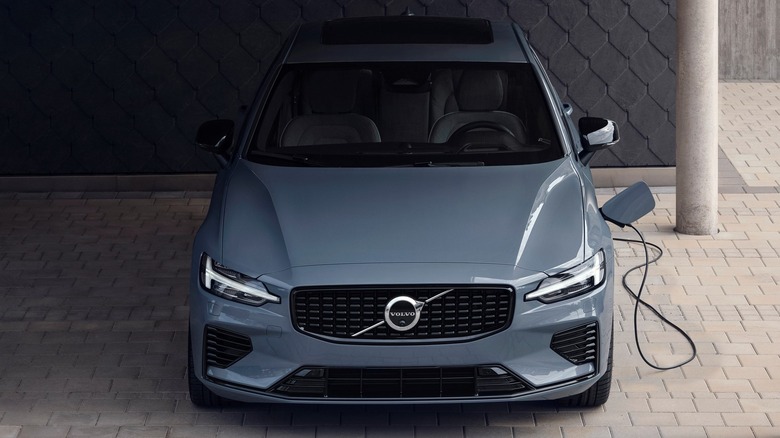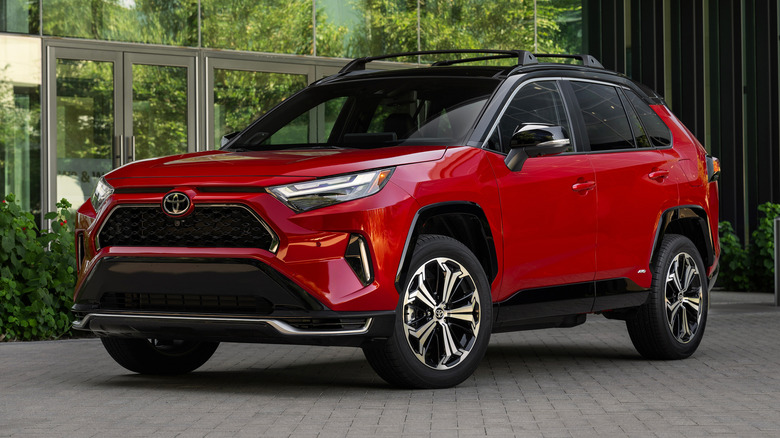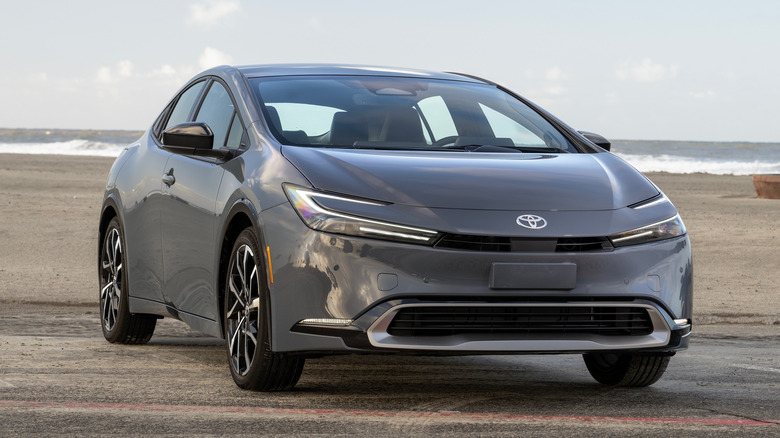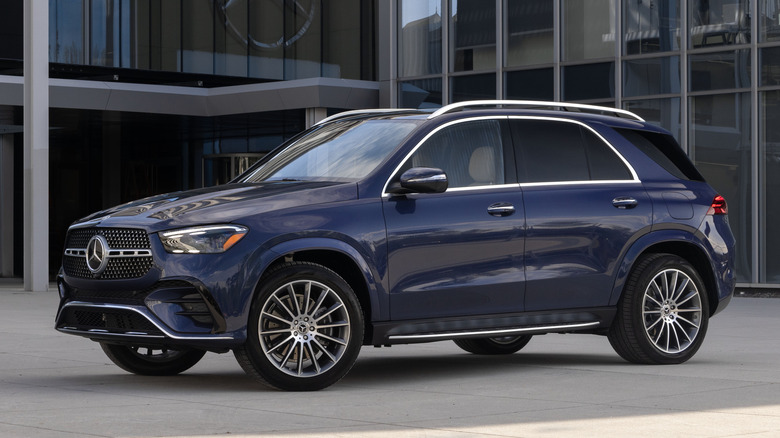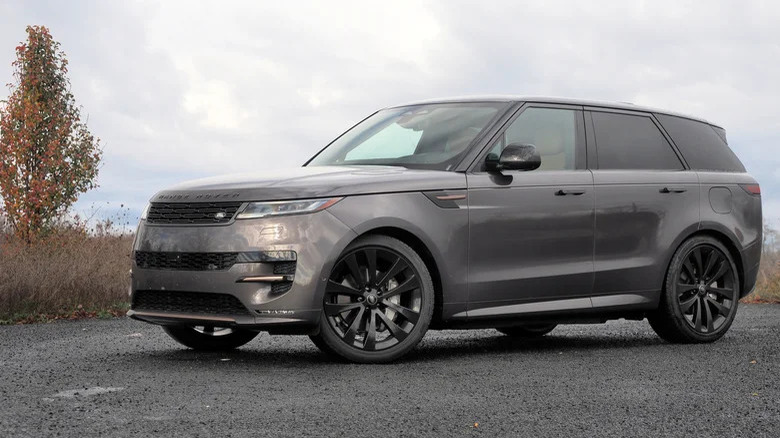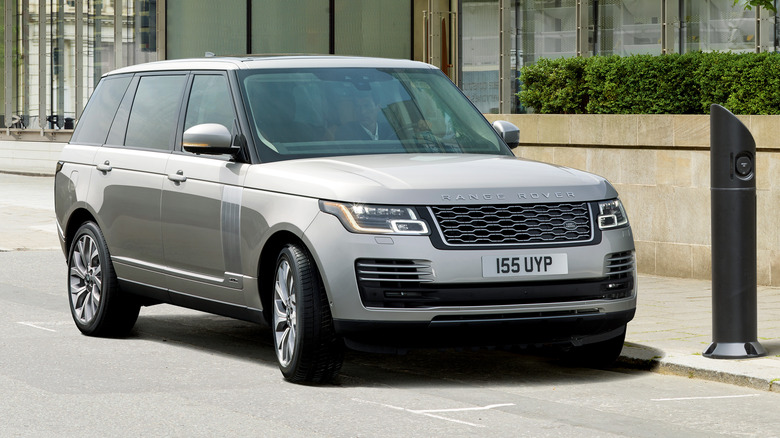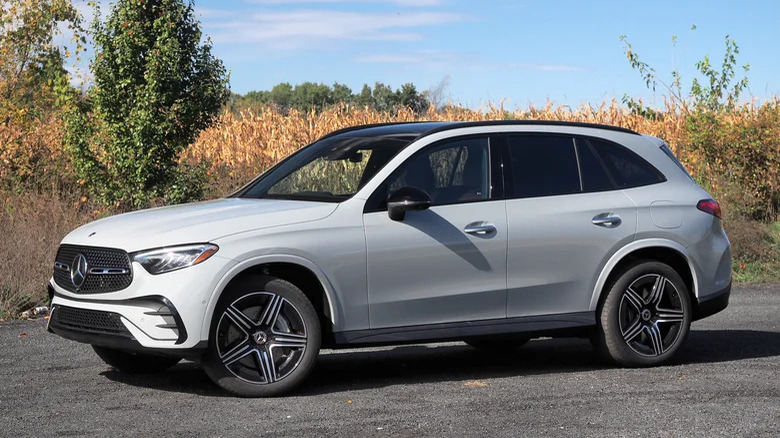12 Hybrid Vehicles That Promise The Most Electric Range Per Battery Charge
Hybrid vehicles have proven to be increasingly popular with buyers, as they offer a greener alternative to traditional combustion vehicles but without the potential sacrifices that come with switching to an all-electric model. Most standard hybrids only come with minimal all-electric range, with their battery-powered motors instead being primarily intended to assist the combustion engine during everyday, slow-speed driving. However, the best plug-in hybrids now offer enough range that drivers could now make many everyday journeys without needing the gas engine at all.
These 12 models offer some of the highest all-electric ranges on the market according to EPA data, with each one able to achieve over 30 miles in zero-emission mode. This list isn't exhaustive, as new plug-in hybrid models are continually being launched, and some of the most recent launches don't yet appear on the EPA's database. The listed models cover a wide variety of segments and price brackets, and are ranked in order of their officially claimed all-electric range.
Kia Sportage Plug-In Hybrid – 34 miles
The Kia Sportage Plug-In Hybrid is one of the most affordable plug-in hybrids of its size, with a starting price of around $40,000. For their cash, buyers get a 1.6L four-cylinder hybrid powertrain making a combined 261 horsepower and up to 34 miles of all-electric range. Without electric range being taken into account, the Sportage Plug-In Hybrid achieves an EPA-estimated combined 35 mpg, but make full use of that electric range and that figure jumps to 84 mpge.
Drivers who have access to an electric charger might also want to consider the Sportage Hybrid, which doesn't require plugging in to reach its peak efficiency. It's one of the most fuel-efficient non-PHEV hybrids on the market, with a combined efficiency of 43 mpg. Both variants offer the generous equipment levels, roomy interior, and keen pricing that the Sportage has built its reputation on.
However, the current generation Sportage is nearing the end of its production cycle, with a refreshed model on the way for the 2026 model year. Whether the upcoming Sportage will offer even better efficiency and a greater all-electric range than the current generation remains to be seen, as the EPA hasn't released official figures as of this writing. Either way, it might be worth holding out for.
Volvo XC60 Plug-In Hybrid – 35 miles
Formerly marketed as the Volvo XC60 Recharge and now called the XC60 Plug-In Hybrid, the Swedish brand's mid-size PHEV crossover competes in a packed segment. A handful of its rivals offer slightly higher all-electric range, but its officially quoted peak electric range of 35 miles still makes it one of the most efficient cars in its segment. It's one of the nicest inside too, with a cabin that's sleek and airy without being quite as minimalist as some of its rivals. We thought some larger buttons would have been nice, though.
With a full battery and a full tank, drivers can expect 560 miles of range according to the EPA. The 2.0L four-cylinder engine is rated to achieve a combined 28 mpg on premium gas, and with the electric range taken into account, the agency quotes a combined 63 mpge. While it's impressive for its segment, the XC60 Plug-In Hybrid still isn't especially efficient compared to the overall market average. In fact, the EPA estimates that buyers will save just $100 per year in fuel costs compared to the average new car.
Ford Escape Plug-In Hybrid – 37 miles
Many of the most popular family SUVs on the market are available in both non-hybrid and hybrid forms, with a significant proportion of those also offering a plug-in hybrid option. The Ford Escape Plug-In Hybrid is one such model, offering up to 37 miles of all-electric range according to the EPA. Without its battery charged, the Escape's 2.5L four-cylinder engine averages a reported 40 mpg, while its electric and gas combined figure sits at 101 mpge.
Those figures are enough to make the Escape Plug-In Hybrid significantly more efficient than the average new car, with buyers saving an estimated $700 per year on fuel based on an annual mileage of 15,000 miles. The model is also competitively priced against its similarly sized competition, starting from around $40,000 once destination and shipping fees are taken into account. A fully-loaded example with all the options ticked, however, will cost closer to $50,000.
Lexus NX 450h AWD – 37 miles
Slotting in below the RX as a more wallet-friendly luxury SUV, the Lexus NX 450h+ does exactly what Lexus buyers will expect of it. That's no bad thing — the usual Lexus comfort, ride quality, and efficiency from its 2.5L four-cylinder hybrid powertrain are all present and correct here. Regarding the latter, the official claim is an all-electric range of up to 37 miles, with a combined 84 mpge achievable with a fully charged battery and a full tank. Without the battery, that figure drops to a still-respectable 36 mpg.
Advertised all-electric ranges usually tend to be on the optimistic side, but our real-world testing confirmed that the range of the NX 450h+ lived up to its billed capabilities. Through urban traffic, our reviewer recorded over 30 miles of all-electric range, and on the interstate, they managed a highly impressive 50 miles before the gas engine kicked in. While most journeys won't feature conditions as optimal as our test route for the second figure, it's safe to say that the NX should at least be capable of living up to its advertised economy.
Mitsubishi Outlander PHEV – 38 miles
Fighting for recognition in such a crowded market of SUVs isn't easy, and some models inevitably get overlooked. The Mitsubishi Outlander PHEV might not be the first model that most buyers think of when it comes to family hauling duties, but with seven seats and an all-electric range of up to 38 miles, it shouldn't be dismissed. With a full battery and a full tank, it offers an EPA-certified figure of 64 mpge combined, while a flat battery will result in its 2.4L four-cylinder engine achieving just 26 mpg combined.
None of those numbers are groundbreaking for a plug-in hybrid, but they still match up well to the limited competition that the Outlander PHEV has. Although, exactly what constitutes competition for the car is debatable, as most PHEV SUVs don't feature seven seats. Those that do tend to be more upmarket than the Outlander PHEV, and so, despite its relatively anonymous profile, it's somewhat of a unique option in the current market.
Volvo S60 Plug-In Hybrid – 41 miles
Much like the XC60, the S60 is another Volvo model that was formerly marketed under the Recharge branding. For 2025, that nomenclature has been dropped, and it's now known as simply the S60 Plug-In Hybrid. The latest model year offers a 2.0L four-cylinder hybrid powertrain that achieves 31 mpg combined with a flat battery, or 74 mpge with its battery fully charged. Its all-electric range is claimed to be up to 41 miles.
The S60 is the latest iteration of Volvo's long-running compact sedan, but buyers looking for extra space could also consider the V60 wagon. It is sold with an identical powertrain and offers the same efficiency figures and all-electric range as the S60.
Both the S60 PHEV and V60 PHEV offer drivers a familiar mix of Swedish style, solid equipment levels, and clean — if slightly generic — exterior styling. The unique crystal glass shifter from previous model years remains available too.
Toyota RAV4 Plug-In Hybrid – 42 miles
Much like Volvo, Toyota has decided to simplify its naming conventions for 2025, dropping the Prime moniker in favor of referring to all of its plug-in models as simply Plug-In Hybrid. The only major change is the name, with the 2025 RAV4 Plug-In Hybrid being otherwise unaltered from the 2024 RAV4 Prime. The latter offers a combined 94 mpge with a full battery and 38 mpg on gas power alone. As of this writing, numbers for the 2025 model have yet to be published, but since there are no mechanical changes made, they should be identical.
That means the RAV4 Plug-In Hybrid should achieve up to 42 miles of all-electric range, with its 2.5L four-cylinder engine kicking in once that range is depleted. The car's efficiency should result in fuel savings of $700 per year compared to the average new vehicle, assuming an average annual mileage of 15,000 miles.
Toyota Prius Plug-In Hybrid – 44 miles
The Prius Plug-In Hybrid has also been given a new name for 2025, but underneath, it's the same as the Prius Prime from previous model years. Under the hood sits a 2.0L four-cylinder hybrid powertrain offering 52 mpg with no battery charge, or 127 mpge with a fully charged battery. The Prius Plug-In Hybrid's all-electric range is estimated to be up to 44 miles. With such high efficiency figures, drivers can expect to save almost $1,000 per year on fuel costs based on a 15,000 mile average annual mileage.
Reviewing the Prius Prime in 2024, we were impressed with the car's level of standard equipment and handling, with the latter being better than you might expect given the car's focus on efficiency. We also noted the car's value for money, with the 2025 plug-in Prius starting from around $35,000 with destination fees taken into account. That makes the Prius Plug-In Hybrid one of the cheapest PHEVs on the market, as well as it being one of the most efficient.
Mercedes-Benz GLE450e – 50 miles
Mercedes-Benz might not be the first brand that buyers think of when it comes to plug-in hybrids, but their SUV models boast some of the longest all-electric ranges on the market. According to the EPA, the Mercedes-Benz GLE450e will achieve up to 50 miles of all-electric range, beating hybrid stalwarts like the Toyota Prius. Overall efficiency is still significant down compared to the Prius though, with the GLE450e getting 60 mpge with a full battery and just 23 mpg when running on premium gas alone.
That makes it just as efficient as the average new car which, given its size, is still commendable. The EPA estimates that a full battery and a full tank will give the car a combined range of 450 miles, and refilling the tank with gas will cost $67 based on nationwide average prices. That cost does not include the price of recharging the battery, which can vary considerably depending upon whether it's recharged at home or via a public charging station.
Land Rover Range Rover Sport P460 PHEV – 53 miles
The Range Rover Sport sits a step below the full-fat Range Rover in the British brand's range, but its PHEV variant offers an identical all-electric range to its larger lineup sibling. According to the EPA, it should achieve up to 53 miles without the gas engine being needed. Our review of the 2025 Range Rover Sport PHEV found little to dislike about the car's powertrain, particularly since its supports limited DC fast charging, which many other PHEVs lack.
Drivers will want to make sure that they keep the car charged as often as possible, since its combined 21 mpg when running on gas-only is far from frugal. With a full battery, that figure jumps to a combined 53 mpge. Keeping it charged also ensures that the powertrain is as responsive as possible, as we found that with only the 3.0L six-cylinder to rely on, the car wasn't quite as enthusiastic when you put your foot down.
Land Rover Range Rover P550 PHEV – 53 miles
Although it's larger and even plusher inside than the Range Rover Sport, the full-size Range Rover offers the same hybrid 3.0L six-cylinder hybrid powertrain as its smaller sibling. As such, its EPA figures remain the same: 53 mpge with a full battery, 21 mpg on premium gas alone, and up to 53 miles of all-electric range. Buyers can expect to pay well into six-figure territory for one, with the plug-in hybrid starting from around $120,000 and quickly increasing in price depending on what options are picked.
Despite its impressive all-electric range, the overall heft and low gas-only mileage contributes to the Range Rover PHEV being marginally more expensive to run than the average car in terms of fuel costs. Per year, buyers can expect to pay around $100 extra in fuel, assuming an annual mileage of 15,000 miles. On a full tank and with a full battery, the car should manage up to 420 miles before it needs to stop at a fueling or charging station.
Mercedes-Benz GLC350e – 54 miles
The Mercedes-Benz GLC350e boasts an exceptionally high all-electric range, offering up to 54 miles on a full battery. However, its combined EPA figures are less exceptional. Buyers can expect 64 mpge with gas and electric power and 25 mpg when its 2.0L four-cylinder gas powertrain is solely responsible for powering the car. We also found the gas engine to be a little loud under hard acceleration.
Still, the GLC350e is a well-rounded offering, with enough all-electric range for the majority of everyday trips. In suburban or urban driving and with access to a home charger, it's feasible that drivers could go days without needing the gas engine once. The car delivers the same level of luxury that Mercedes buyers will expect too, with a long options list and plenty of opportunity to add niceties like real wood and fine leather to the cabin. Of course, that all impacts on the price, with the GLC350e starting at around $61,000 and rising quickly once options are taken into account.
That price puts it in similar territory to Volvo's XC60 Plug-In Hybrid, discussed above, as well as the BMW X5 xDrive50e, which isn't included here as it does not appear on the EPA's database of 2024 and 2025 models as of this writing. BMW claims that it achieves up to 39 miles of electric range, putting it far short of the class-leading GLC350e.
